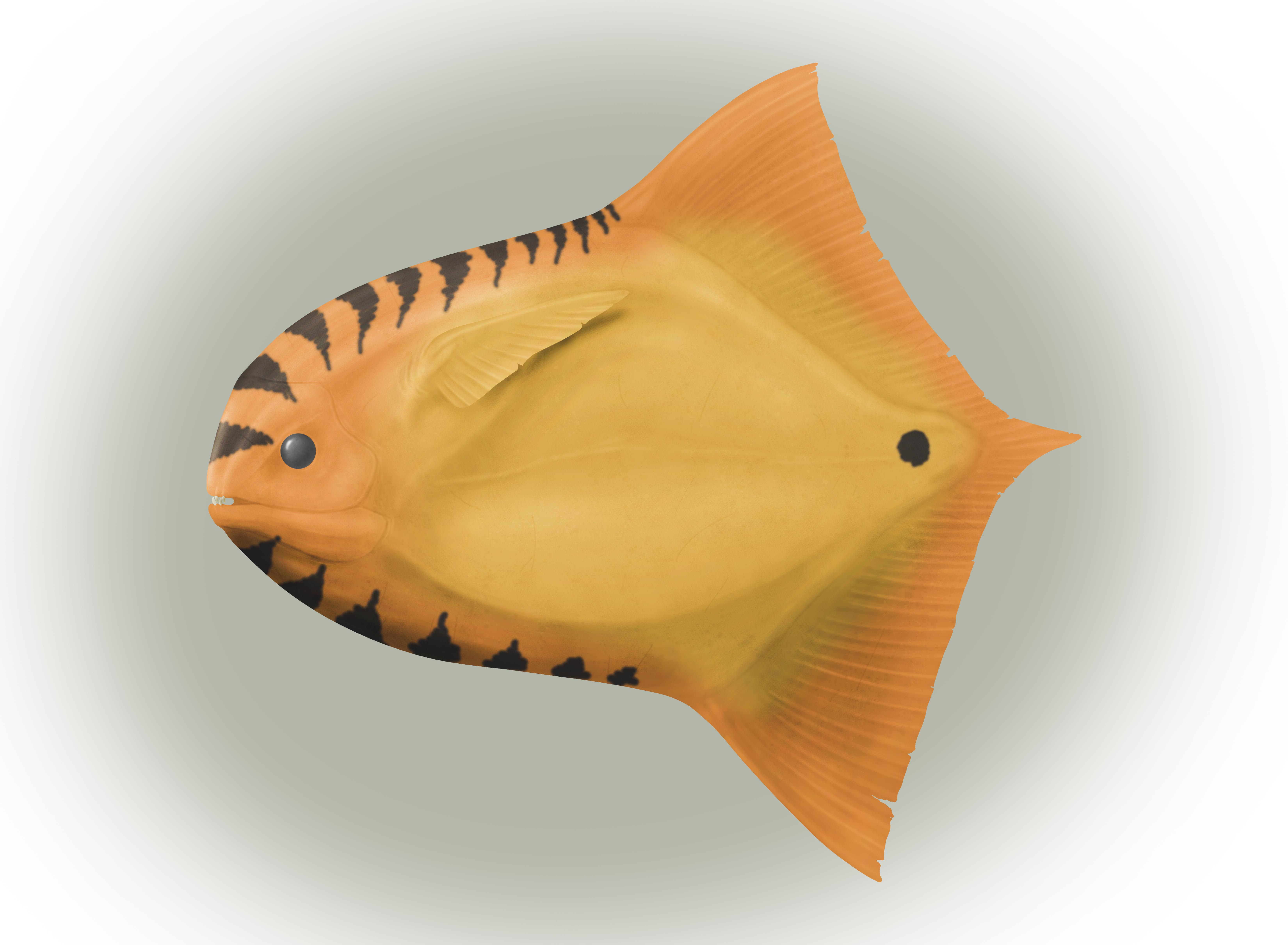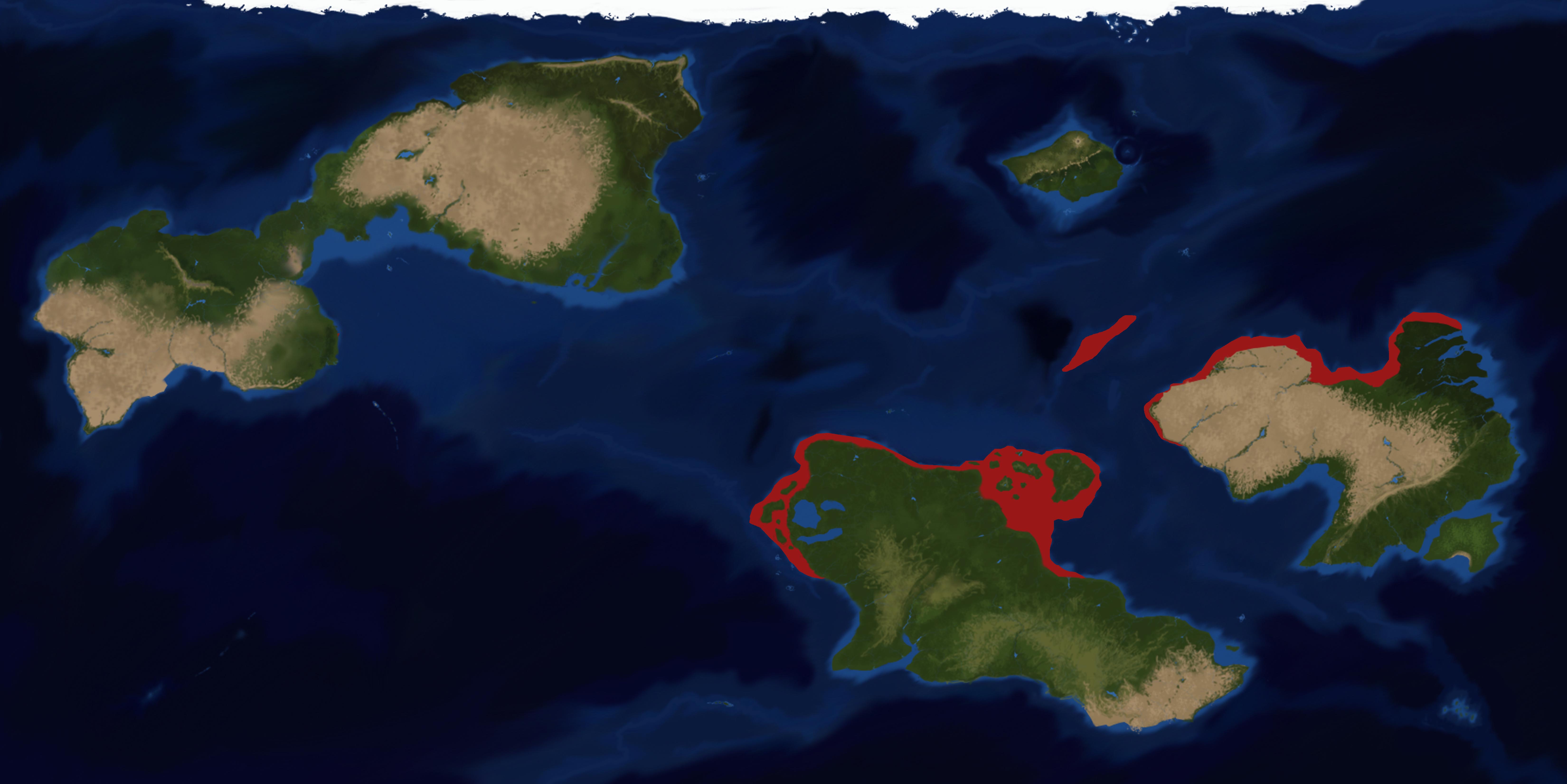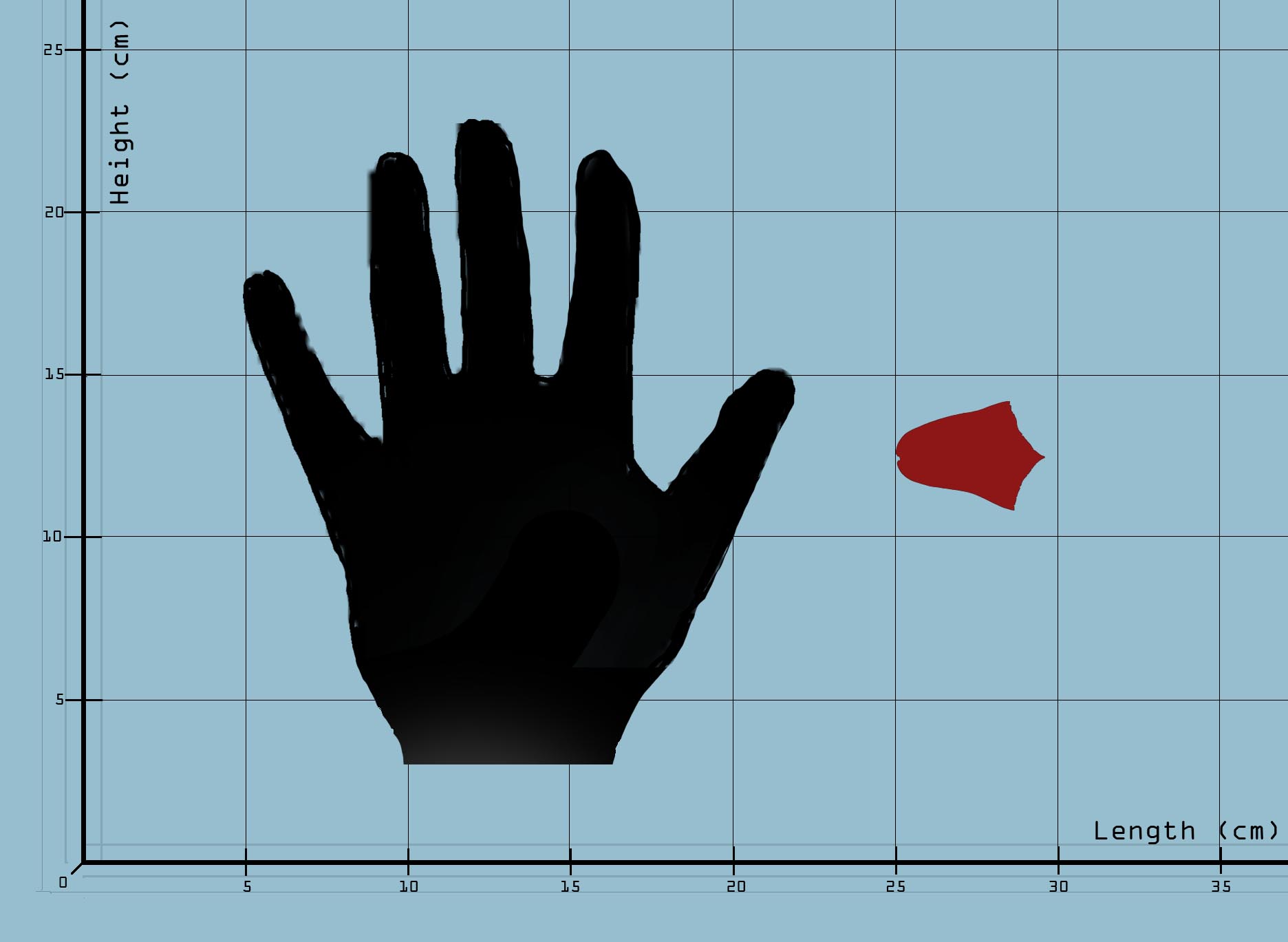Orange Ribbondart
Pseudociclosthoma dorsalocaudata is a small sized herbivorous amphibian that can be found inhabiting the southern reefs of the Nuwadi and Irobian Oceans.
This animal lives in large schools ranging from 30 to 50 specimens grazing from the various soft plantlife.
Easily identifiable by the unusual conformation of the fins; the dorsal and anal fins have fused with the caudals forming the fan-like structure seen in the animal, whilst the pectoral fins moved up near the back of the animal, compared to the ventral area, as seen in other members of its family.
Inside the mouth there are four pairs of large teeth used by the animal to crush the soft plants it feeds on.
P. dorsalocaudata is one of the most common aquarium animals on the planet; being very easy to mantain and is easy to breed in captivity.
Basic Information
Anatomy
- Rounded and thin overall body shape.
- Cranial armor reabsorbed but still clearly visible.
- Pectoral fins Dorsally positioned and reduced.
- Dorsal and Anal fins fused together and symmetrical, creating an Eucaudal fin.
Genetics and Reproduction
The animal reproduces during the spring.
Females will select a mate during the whole year, basing themselves on the memory of which individual has brought her the most food, a thing males will do year long in the hopes of getting his selected mate.
A female will keep the eggs inside the duct for ten days before deposition.
Males and females will create massive bubble nests by collectively working on one; the females will lay the eggs inside the forming nests.
The entire school will actively maintain the nest's health during the whole incubation period and will start demolishing it only when the young are born; letting them out of their bubble nest to join the adults.
Growth Rate & Stages
Ontogenesis marked in the species.
Hatchlings are born with Dorsal and Anal fins separated and the Pectoral fins moved ventrally to a median position.
These changes are the same, while less extreme, than in its close cousins, the Geminipiscini.
Loss of natal aculeus at the second week of life.
Ecology and Habitats
Epipelagic animal of the neritic zone.
They can be found living at depths between 2 to 20 m deep.
Pseudociclosthoma dorsalocaudata lives in the under-reef, feeding on soft plants that grow on the root of armored plants; these animals breach to the over-reef only to nest or at night, when they can forage above the under-reef in relative safety.
Dietary Needs and Habits
Pseudociclosthoma dorsalocaudata is an herbivorous animal that forages on soft plants of the under-reef and over-reef.
It rarely feeds on small soft bodied invertebrates.
Biological Cycle
Sexual fertility at two days of age.
Sexual sterility doesn't come to the species.
Periannial creatures with no major periods of lesser activity.
Additional Information
Social Structure
Social animals living in schools of up to fifty mature specimens, even more counting immature ones.
Very complex social interactions; members of the species will often communicate one with the other.
Mating selection all year long through various of these interactions.
Domestication
Perhaps THE most common aquarium species on the planet due to its colors, size, ease to maintain and predisposition to breed in captivity.
Uses, Products & Exploitation
Main use in the pet trade.
Geographic Origin and Distribution
Perception and Sensory Capabilities
Good sight and color vision.
Symbiotic and Parasitic organisms
In a mutualistic relationship with the armored plants of the reef; these animals will keep them clean from root parasites in exchange for protection.
They can be afflicted by skin parasites and intraocular worms.
Scientific Name
Eoichthyia; Tartarosomnia; Rotunducephalidae; Gladiopinneoidea; Qadratocephaloidea; Sogeridae ; Sogerinae; Flocculini; Pseudociclosthoma; P. dorsalocaudata
Lifespan
2 years
Conservation Status
LEAST CONCERN: No measures underway to protect this animal
Population trend: STABLE
Average Weight
10 to 20 gr
Body Tint, Colouring and Marking
Orange body tint with dark grey to black striping on the back and belly area; dark grey to black round dot on the tail, possibly an ocellation.
Remove these ads. Join the Worldbuilders Guild












Comments